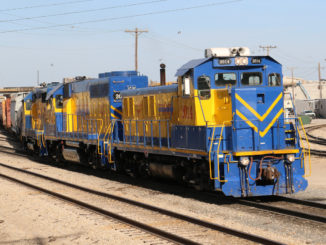WASHINGTON — Following the successful introduction of revenue management on many of its Northeast Corridor trains last year, Amtrak will expand the practice in the Northeast to Acela Express and Metroliner service, beginning with trains departing Feb. 6.
The benefit of revenue management for passengers is that those with flexible travel times can take advantage of reduced fares on lower-demand trains. To take advantage of lower fares — up to 15 percent less than the current lowest fare — passengers are encouraged to purchase tickets early and travel during off-peak hours.
Revenue management is the fare system begun by airlines based on passenger demand and seat capacity. Put simply, the average fare is lower on departures with lower demand and higher capacity, and higher on departures with higher demand and lower capacity.
Amtrak is not implementing any across-the-board fare increase at this time, and unlike most airlines, does not charge a fee for exchanging tickets for different trains or times of departure (passengers are required to pay only the difference in fare, if any). The number of Acela Express and Metroliner fares that will be 15 percent higher or lower than existing fares today will be limited and based on demand and capacity.
Amtrak introduced revenue managed fares to its Regional trains in the Northeast in October 2005, and they have been popular among passengers who have used the opportunity to travel at lower fares.
DISCOUNT ON MONTHLY FARES REDUCES: Completing the second of a two-phase fare change for monthly commuter passes in the Northeast Corridor, the Smart Pass discount will be adjusted from 60 percent to 50 percent beginning Feb. 16.
The 50 percent discount continues to be the largest discount offered commuter railroad passengers in the Northeast (based on 18 monthly roundtrips). Smart Pass tickets are good for unlimited travel on designated Amtrak trains during the month for which they are purchased.
Adjustment of the fare, first announced in September 2005, is intended to cover increases in current and anticipated expenses across the board, including the cost of fuel. Amtrak serves about 2,000 Smart Pass monthly passengers in the Northeast Corridor, most of whom commute between Pennsylvania, New Jersey and New York.
Passes purchased prior to February 16 are available at the current 60% discount, and passengers may purchase passes up to three months in advance.
RECORD YEAR FOR AMTRAK CALIFORNIA TRAINS: A record 4.6 million passengers rode Amtrak California trains in 2005. Passenger traffic on all intrastate Amtrak trains in California showed strong gains nearly every month during the year. The combined ridership on Amtrak’s three state-supported routes, the Pacific Surfliner, Capitol Corridor and San Joaquins was up 4.9 percent in 2005 over the previous year. Amtrak attributes the increase to a strong economy, rising gasoline prices and continued growth of the San Joaquin valley.
Amtrak Pacific Surfliner trains provide 12 daily roundtrips between San Diego and Los Angeles, with five roundtrips extending to Santa Barbara and two continuing to San Luis Obispo. In 2005, Pacific Surfliner ridership was 2.5 million passengers, a 4.6 percent increase over the previous year. More than 312,000 passengers rode between Angeles and San Diego, an increase of 6 percent.
Amtrak San Joaquin trains offer four daily roundtrips between Bakersfield and Oakland and two daily roundtrips between Bakersfield and Sacramento. Ridership during 2005 was 771,409 passengers, a 3.2 percent increase. Ridership between Bakersfield and Fresno was up 17.6 percent over the previous year with 82,064 passengers.
Amtrak Capitol Corridor trains provide service between Sacramento and the Bay Area (San Francisco/Oakland/San Jose) with 12 daily roundtrips. In 2005, 1.3 million passengers rode Capitol Corridor trains, an increase of 6.5 percent. More than 110,000 passengers traveled between Richmond and Sacramento, an increase of 9.4 percent over the previous year.
Through a $73 million-per-year annual state operating assistance program, the California Department of Transportation partners with Amtrak to provide service on three intercity rail corridors in California.
— Staff and Wire Reports
Published in the February 2006 edition of The Cross-Tie.



